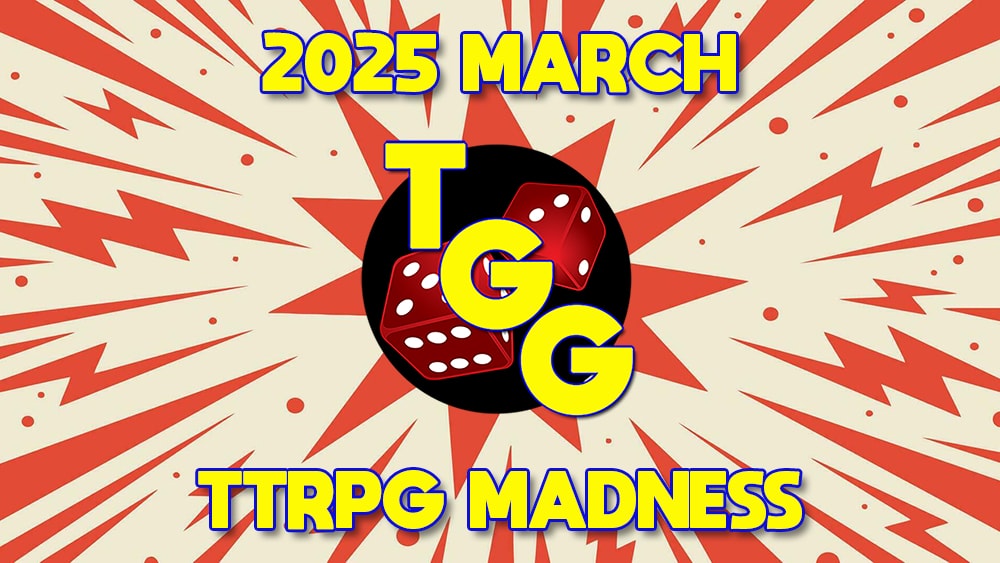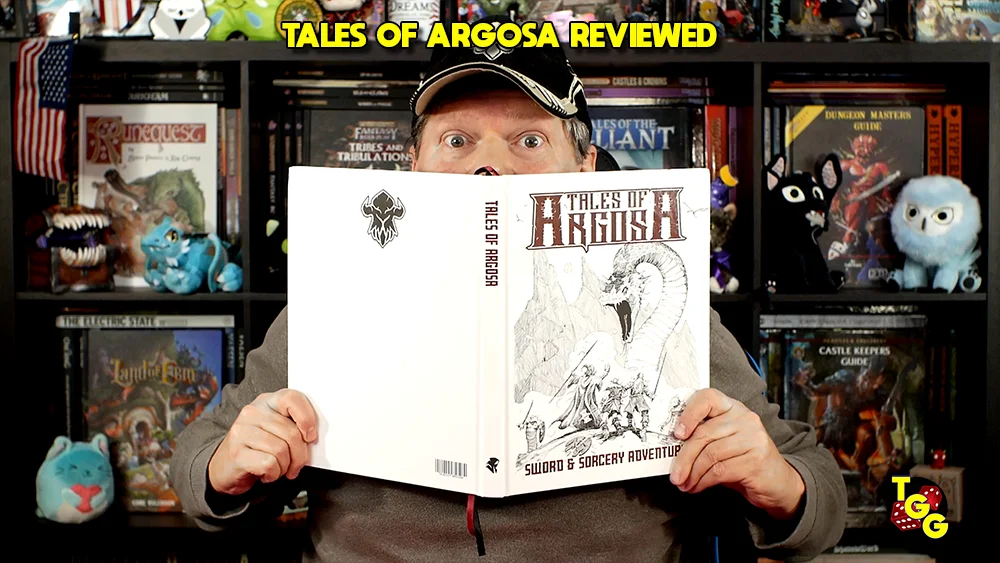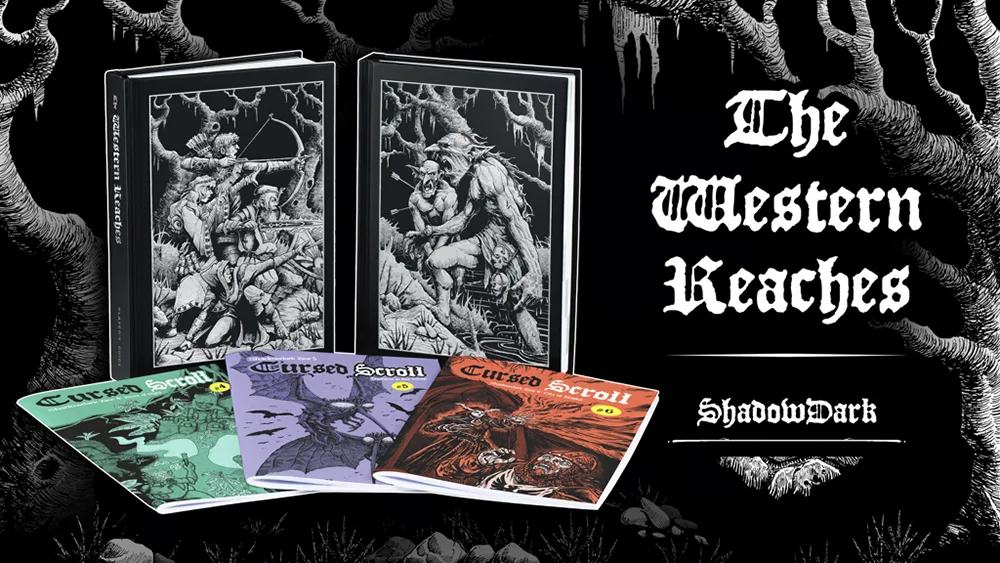
Publisher: Modiphius Entertainment
Authors: Dave Chapman, Jim Johnson, Patrick Goodman, Ross Isaacs, Bill Maxwell, Jonathon Breese, Nathan Dowdell, John Snead, Oz Mills, Aaron Pollyea, Rob Wieland, Ade Smith, Anthony Jennings, Dan Taylor, Dayton Ward, Michael Brophy, Giles Pritchard, and Maggie Carroll
Artists: Guillem Pongiluppi and Joseph Diaz, Tobias Richter, Matthew Comben, Rodrigo Gonzalez Toledo, Michele Frigo, Connor Magill, Nick Greenwood, Wayne Miller, Joshua Calloway, Martin Sobr, Joseph Diaz, Steve Stark, Grzegorz Pedrycz, Chris Adamek, and Vitali Timkin
Year: 2017
Players: It’s an RPG corebook, so two or more
Ages: 12+ (My opinion)
Playing Time: Ongoing
Genre: Roleplaying game based on the Star Trek television series and films
Pages: 374 pages
Retail Price: $60.00 for the standard edition hardcover or grab the PDF at DriveThruRPG for $20.00
As the eagerly anticipated launch of Star Trek: Discovery arrives this weekend on CBS, with subsequent episodes airing exclusively on the subscription CBS All Access, interest in the over fifty year long Trek franchise is certainly at a peak. I’m certain the new series will please plenty of long time fans while infuriating other serious Trekkers, which actually seems to be par for the course these days as far as fandom goes; one camp will love something while another camp actively despises that very same thing. In a way this also strikes me as the sort of reaction the latest roleplaying game from Modiphius Entertainment is going to generate for gamers.
That’s right! It’s time for me to finally review Star Trek Adventures! The digital edition arrived prior to this year’s Gen Con and then the physical copies of the book (in three flavors of exclusivity) took their initial bow at the convention. The corebook was one of the hottest sellers during Gen Con and the Modiphius exhibit area was plenty packed with buyers! Yet, I’m sure there are
Before I begin to dish on the RPG I should establish my Star Trek cred or, some may feel, a lack of there of. Personally, I’ve seen every episode of the original 1960s series, Star Trek: The Next Generation, Star Trek: Enterprise, as well as all of the films. As far as Deep Space Nine and Voyager? Well, neither series really grabbed me so I have to honestly say I mostly bailed on those after the first seasons or so and afterward only caught later episodes on occasion. My pal Luis in Arizona has told me, more than once, I need to get to season three of DS9 because that’s when the show really kicks in. Yet, I’ve found making it through the forty plus episodes to actually get to season three a rather tough slog. Back in the day though, when TNG was first airing in syndication, a Sunday night didn’t go by when my butt wasn’t parked in front of the tellie awaiting the latest episode. In other words, I consider myself pretty well versed in most things Trek but never claim to have an encyclopedic knowledge of canon.
Upon getting a first look at the 374 page corebook for Star Trek Adventures a few things quickly struck me. The layout is nicely presented with a graphics style mimicking that of a LCARS (Library Computer Access and Retrieval System) from the era of TNG. For the most part the artwork is exceptionally well done, although there are a handful of images I thought fell a bit flat or just struck me as boring filler. Overall, like every RPG I’ve seen from Modiphius, this is a top notch presentation …with one exception. The default PDF is white text on black backround. While this might have seemed a good idea in theory (the blackness of space and all that) the reality is most readers will find the white on black to be very tiring on the eyes after a while. Granted, this might not be a problem if you’re reading a physical book but I found after about forty or fifty pages in a sitting, I just had to take a break from ye olde iPad to give my eyes a rest. The PDF edition, at least at DriveThruRPG, thankfully also comes with a traditional black on white “printer friendly” typeset. Trust me, read that one and your peepers will thank you.
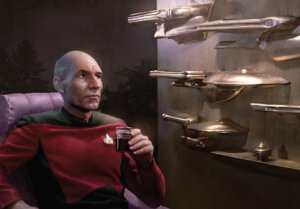
Star Trek Adventures begins by setting the scene for your ongoing mission. The first seventy or so pages are devoted to the history of the United Federation of Planets, life in the Twenty-third Century, as well as the role Star Fleet plays in the universe. Interestingly, much of this history is presented as after action dispatches from various Star Fleet personnel or excerpts from captains’ logs. Plenty of Trek episodes are referenced and I found this approach to be pretty cool. Granted, gamers not overly familiar with decades of Trek TV and movies will be a bit lost but it isn’t as if a mildly casual fan would be drawn to the RPG in the first place; I serious doubt anyone is out there thinking, “Hmmm. I wonder what this Star Track thing is that people have been carrying on about forever. Maybe I should buy this game to find out?”
The core rules are dissected in around twenty pages. Star Trek Adventures is based on the 2d20 system which originally appeared in Mutant Chronicles and most recently in Conan: Adventures in an Age Undreamed Of. In essence, the system breaks down into players rolling two (sometimes more or sometimes less) twenty sided dice as they attempt to roll equal to or under a target number determined mainly by a combined character attribute and discipline (skill) in order to complete a task. Players look to roll as many successes as possible to achieve the best outcome for these tasks. Of course, there are plenty of other factors which come into play to determine success or failure such as difficulty, threats, momentum, and more.
As an example, let’s say the player characters are part of an away team which has beamed over to the bridge of a small, abandoned starship. The ship is of an unknown design so of course the characters are looking to find out not only what sort of spacecraft this is but also who owns it and why it’s abandoned. The characters happen to be a chief engineer, a conn officer, and a science officer. The players have may already determined their first goal is to access the abandoned ship’s logs to learn more about the vessel. The GM might require the engineer to restore some power to the ship’s system to enable the conn officer to access the logs and readouts in order for the science officer to try and decipher the information. Each of these players will then use their corresponding attributes and disciplines to determine the target numbers for their tasks.
On occasion (usually in combat) extra six sided challenge dice are rolled to determine damage and possible extra effects. Possible outcomes of these dice are blank, one, two, or one plus an effect. Of course Modiphius has custom dice available for purchase but you can get away with using standard six siders easily enough by counting faces with three and four pips as blank results.
Gamers may have heard Star Trek Adventures is a “rules light” system but that really isn’t the case. Compared to Mutant Chronicles or Conan the system is pared down a touch to be more appealing to people just getting into roleplaying because of the Trek license but, in my opinion, 2d20 veers towards a “crunchier” system in the first place. This isn’t to say the mechanics are overly dense or difficult to wrap your head around but first timers should be aware the rules sections of the book should be read (and possibly reread) carefully to make sure everything clicks.
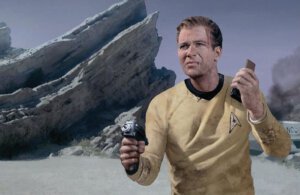
Control: This includes self-disipline, focus, as well as coordination.
Daring: The ability to take decisive action and rely on instinct.
Fitness: The overall ability to take and withstand physical hardship. Also covers employing force against others.
Insight: Emotional intelligence as well as empathy and a sense of well being. Includes understanding other people and their feelings.
Presence: The force of personality and to command attention. Can be used in situations as varied as diplomatic missions, issuing commands, or even seducing another person.
Reason: The dependence on logic and analyzing of facts. Critical in constructing plans and interpreting information.
As you can see from the descriptions above, these aren’t your standard RPG attributes and each can encompass a variety of character aspects other than the tried and true standard strength, wisdom, charisma, etc…
A player will also choose a discipline for their character and these include:
Command: Focused on leadership and negotiation. Famous Trek characters such as James T. Kirk and Kathryn Jane would have this discipline.
Conn: Focused on piloting and navigation. Travis Mayweather and Hikaru Sulu are good examples of characters possessing the conn discipline.
Engineering: Focused on inventing, maintaining and repairing technology. Montgomery Scott and Geordi La Forge certainly have the engineering discipline.
Medicine: For all intents and purposes, the ship’s doctor focused on healing the sick and injured. This can also include mental health and wellness. Leonard McCoy and Beverly Crusher easily fit into the medicine discipline.
Security: The fabled red shirts who focus on threat assessment and combat tactics. Worf and Odo obviously possess the security discipline.
Science: The study and understanding of not only hard science but also social sciences as well. Spock and Data carry the science discipline.
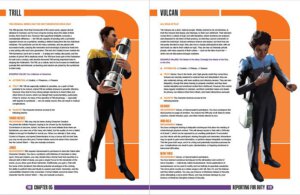
Players will continue to flesh out their character through a series of steps which provide a bit of backstory for their Trek alter egos. The characters will choose a home world environment, determine upbringing, attend Starfleet Academy, learn how long they’ve been serving in Starfleet, choose a couple of career events, and finish with some finishing touches. Players can roll randomly for many of these steps or simply choose what they wish but effectively there’s a lot of attribute and discipline modifying going on as well as rounding out the personality and skills of the characters. Once finished, a starting character may not have an attribute higher than twelve nor a single discipline higher than five.
During this creation process the players are also introduced to talents, focuses, and values Simply enough a talent give a character an in game advantage in some situations. Most talents are tied into a discipline and could be anything from precise evasion, I know my ship, intense scrutiny, triage, and more. Racial choice also provides the possibility of gaining talents. There are only around fifty talents included in the book but it’s easy enough to create your own. A focus is a specialty within a discipline. Focuses could include diplomacy, evasive action, geology, hand phasers, or even spatial phenomena. Strangely enough there is no master list of focuses as players are encouraged to create their own. Finally, values are essentially personality traits of the character give in as a sentence or phrase. These could range from anything like “The needs of the many outweigh the needs of the few, or one” to “Voice of the crew.” Coming up with values is effectively another aspect of character creation left in the hands of the players.
I will mention the corebook is focused on Star Fleet and, to be more specific, approximately the point in Trek history where Deep Space Nine is coming online. Those hoping for detailed creation rules for Romulan spies, Klingons serving in an officer exchange, or any number of lesser races from the Trek universe will be sorely disappointed. Even the original series and Enterprise get a bit of the short end of the stick. These aren’t game breakers but it’s important to note what’s in the corebook and what’s probably planned for future releases; there is a Klingon sourcebook on the very near horizon from Modiphius.
Once aspect of Star Trek Adventures which is pretty interesting is the concept of supporting characters. Since the main protaganists shouldn’t be expected to be involved in every scene during a mission (why would the ship’s helmsman be part of a first contact away team?) players can take on the roles of supporting players. This is a nice way to build the backgrounds of important, if not necessarily critical, NPC members of the crew. Rather than the GM taking control of a Yeoman Rand, Miles O’Brien, or Reginald Barclay the players can assume those roleplaying duties. This is a nice way for players to have a deeper investment in the success of a mission or development of their entire ship.
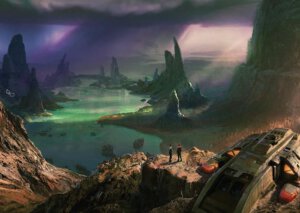
Rules regarding conflict is fairly clean be it social, physical, or starship combat. Once again you’re looking at performing successful tasks and determining the results. It is relatively easy to be knocked out of action in a brawl or getting hit by a disruptor blast but, unless your GM is a bit of a sadist, characters won’t be dropping like flies. I will mention starship combat isn’t overly complex but the sheer number of possible tasks, and what stations handle these tasks, can end up to be a little overwhelming for players. Starship damage is applied to systems in the vein of so many films and episodes of the past. “Oh no! The warp core has been breached!” Personally, I would homebrew a bit with some of the combat mechanics (the strange initiative system is a prime example as I’ve read it umpteen times and still don’t have a solid grasp) because the best Star Trek stories have always been about character interactions as opposed to slugfests. Of course, this is just my opinion.
Also included in the corebook are sections involving life in space and creating planets, technology, spaceports and colonies, as well as equipment, alien life forms, and various organizations. About thirty pages are devoted to the game master and running Star Trek Adventures; a page count which I think is lower than it should have been since so much (focuses, traits, talents, and values) is left to the devices of the players and GM. I’ll bet dollars to doughnuts a player guide and GM guide are planned for the system too. Finishing out the book is a short introductory mission which aims to get the players’ feet wet as far as mechanics and concepts as opposed to immersing them in a truly Trek experience.
For the most part, in an attempt to keep this review shorter than novella length, I’ve really only scratched the surface of what you’ll find within Star Trek Adventures. There’s loads to like about the book and a few less than stellar (no pun intended) aspects as well. While there’s a ton of information about the Trek universe, as well as the rules pertaining to running or playing the game, not all of it is presented in a logical manner. It’s not unusual to need to flip back and forth as you try to find a particular rule or nugget of information which should have been located in another section. Plus, there should be handouts, or cheat sheets, to assist players and GMs with the flow of play; especially with combat tasks.
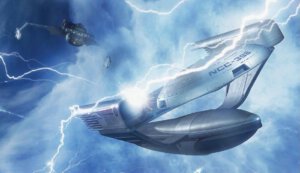
Truth be told, even at a page count over three hundred and seventy pages there’s a lot of Star Trek which didn’t make it into this corebook. I understand the reasoning behind this since Modiphius isn’t going to produce a fifteen hundred page corebook nor is licensing the franchise through Paramount an inexpensive endeavor. If Modiphius can plot out over twenty books devoted to Conan just imagine how many must be at various stages in the pipeline for Star Trek? Game companies like to make a profit so they can stay in business so, while I may be a tad disappointed a few things I hoped would be in Star Trek Adventures aren’t, I have no major beefs with the finished corebook.
When it’s all said and done I review an RPG with a few things in mind. Do I feel the buyer is getting their money’s worth? If the game is based on some other property, does the RPG effectively reflect that property or setting at the gaming table? Most importantly, I ask myself if I would enjoy running the game (or playing a character if I’m not the GM) and look forward to cooking up some cool adventures to put my players through the paces? As far as Star Trek Adventures, I can answer each of those questions in the affirmative. As far as getting your money’s worth I certainly recommend those on the fence purchase the PDF before investing in a physical book. As of this writing, you can actually get the corebook at a mighty nice price at DriveThruRPG but I know that deal isn’t going to last.
While Star Trek Adventures isn’t a perfect Trek RPG it is really good. Obviously, some folks are going to love it as others will be less than enamored by it but I do think it’s a definite buy for gamers who are interested in any sort of Star Trek RPG. Even if you scrapped the 2d20 system entirely to inject a rules set more to your liking there’s still plenty here to inspire you and our gaming gang to boldly go where no one has gone before.









